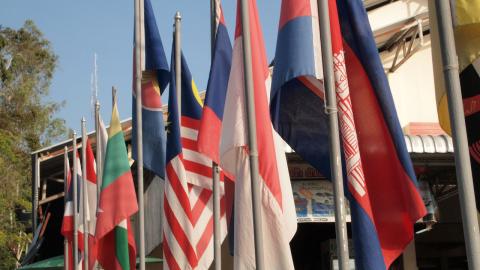Southeast Asia is not just the swing sub-region in the Indo-Pacific but also the soft underbelly of the region—the area most susceptible to Chinese coercion, influence, and expansion. Except for Vietnam, Southeast Asian states have strong fence-sitting tendencies and are reluctant to properly balance and counter Beijing due to their proximity to China, smaller size, limited capabilities, and economic integration with and reliance on China. They are also constantly fearful that the US and its allies will abandon and leave them to fend for themselves against a hostile China. This means that while one can identify pockets of creative and proactive thinking in this sub-region, the prevailing inclinations of the region’s countries are to never back a side before the result is obvious, do the minimum when it comes to burden sharing, and receive maximum economic and security benefits for minimum risk, price, and commitment. In short, they are often inclined toward free riding.
It is easy for the US and its allies to become frustrated with Southeast Asian states that give the impression they are seeking various forms of “strategic welfare.” The more constructive approach is to understand their domestic and external vulnerabilities and work within these.
Below are some principles and policies for dealing with Southeast Asian partners.
1. Form specific and practical collaborations that advance Southeast Asian countries’ capacity to defend themselves from encroachment or coercion.
Rather than seek a comprehensive blueprint for cooperation, the US should lead specific initiatives when the need arises. This might involve cooperation regarding terrestrial, sea, or undersea infrastructure that does not rely on Chinese assets and enhances their capacity to protect their sovereignty.
2. Work with Southeast Asia on non-military forms of cooperation to counter China.
The US should encourage the joint development of protocols and rules that strengthen national resilience and sovereign capability. This will include conventions and practices in domains such as cyber and space, building their in-house capacity to monitor their own sovereign and maritime territory, and encouraging and supporting these states to use international law and conventions as a weapon and a shield to protect their sovereign rights and privileges.
3. Link advances in US and allied military capabilities and posture to specific security benefits for Southeast Asian nations.
The case for changes to US and allied military capabilities and posture needs to include credible arguments showing how these developments will bring net strategic and security benefits to independent countries and not just allies. Without making these arguments and getting key states in Southeast Asia on board, the US and allied capacity to operate flexibly, in an expanded range of geographies, and with ad hoc surge capacity will be limited.
4. Use ASEAN-led forums to American advantage.
ASEAN is the self-appointed gatekeeper of regional diplomatic protocol and conversation. Although it is not an action-oriented entity, ASEAN is still consequential in diplomatic contexts. The US and its allies can use ASEAN’s forums and processes to deeply influence the diplomatic conversation. China is skilled at using ASEAN to sell its narratives and norms to the region.
Full engagement is time-consuming and seemingly pointless, but Southeast Asians interpret inadequate engagement as arrogant and a prelude to disengagement. This means that all arms of the US government should engage with ASEAN as much as possible even as America pursues practical and meaningful cooperation at a bilateral or mini-lateral level.
5. Offer enhanced American market access in return for strategic cooperation.
The Southeast Asian zone (except Singapore) is populated with low- and middle-income-per-capita economies. China knows this and has developed specific strategies to extend its influence and standing. At the most general level, China offers Southeast Asian countries the promise of immediate and guaranteed benefits. Southeast Asian states know that many benefits are transient, the gains are heavily weighted toward China, and Beijing will eventually demand subservience. But such guaranteed and immediate gains are very attractive to many political and economic elites in the region.
In contrast, the US promise of a free and open rules-based order is less clear about the immediate gains on offer and “what’s in it” for Southeast Asian elites and individual countries. This means there are poor incentives for smaller states to risk losing immediate benefits and offending China—a permanent great neighbor—for unclear and uncertain future benefits. The US needs to offer smaller states immediate options, alternatives, and tangible reasons to choose partnership with Washington over Beijing. This increases the importance of offering carrots and not just sticks in the form of greater access to sections of the American market for mutual gain.
It also requires a growing presence of American and allied firms, finance, technology, and know-how to provide non-Chinese options and opportunities.
Go Deeper
Understanding and Countering China's Approach to Economic Decoupling from the United States
An Assessment of US and Allied Information and Influence Warfare
How to Engage and Prevail in Political Warfare against China















